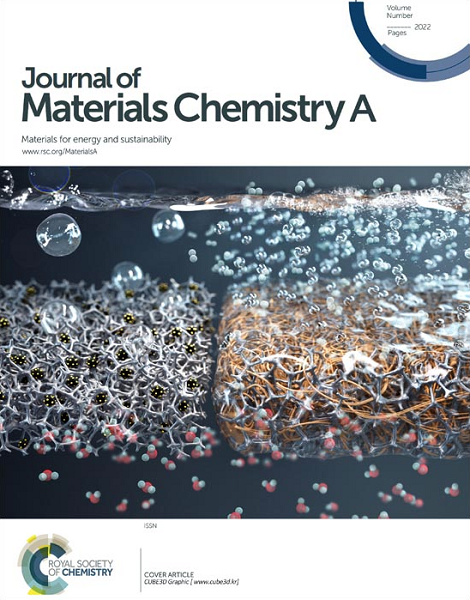安全、高能锂离子电池的嵌入和合金化阳极合并系统设计
IF 9.5
2区 材料科学
Q1 CHEMISTRY, PHYSICAL
引用次数: 0
摘要
开发先进的负极材料对于提高锂离子电池的能量密度和安全性至关重要。在这里,我们展示了由钛酸锂(LTO)和锡锑(SnSb)合金组成的混合阳极,研究了不同LTO:SnSb比例下容量和循环寿命之间的权衡。LTO的近零应变特性通过减轻SnSb在混合阳极中以<; 20% wt%掺入时的体积膨胀问题,提供了机械耐久性。该系统提供了良好的半电池电位(~ 0.5-1.5 V vs. Li/Li⁺),比容量范围为300至500 mAh g⁻¹。本文章由计算机程序翻译,如有差异,请以英文原文为准。

Systematic design of safe, high-energy lithium-ion batteries by merging intercalation and alloying anodes
The development of advanced anode materials is critical for enhancing the energy density and safety of lithium-ion batteries (LIBs). Here, we demonstrate a blended anode comprising lithium titanate (LTO) and tin–antimony (SnSb) alloy, investigating the trade-offs between capacity and cycle life across varying LTO : SnSb ratios. The near-zero strain properties of LTO provide mechanical durability by mitigating the volume expansion issues of SnSb when present at levels <20 wt% in the blended anode. This system delivers a favorable half-cell potential (∼0.5–1.5 V vs. Li/Li+) and specific capacities ranging from 300 to 500 mAh g−1.
求助全文
通过发布文献求助,成功后即可免费获取论文全文。
去求助
来源期刊

Journal of Materials Chemistry A
CHEMISTRY, PHYSICAL-ENERGY & FUELS
CiteScore
19.50
自引率
5.00%
发文量
1892
审稿时长
1.5 months
期刊介绍:
The Journal of Materials Chemistry A, B & C covers a wide range of high-quality studies in the field of materials chemistry, with each section focusing on specific applications of the materials studied. Journal of Materials Chemistry A emphasizes applications in energy and sustainability, including topics such as artificial photosynthesis, batteries, and fuel cells. Journal of Materials Chemistry B focuses on applications in biology and medicine, while Journal of Materials Chemistry C covers applications in optical, magnetic, and electronic devices. Example topic areas within the scope of Journal of Materials Chemistry A include catalysis, green/sustainable materials, sensors, and water treatment, among others.
 求助内容:
求助内容: 应助结果提醒方式:
应助结果提醒方式:


